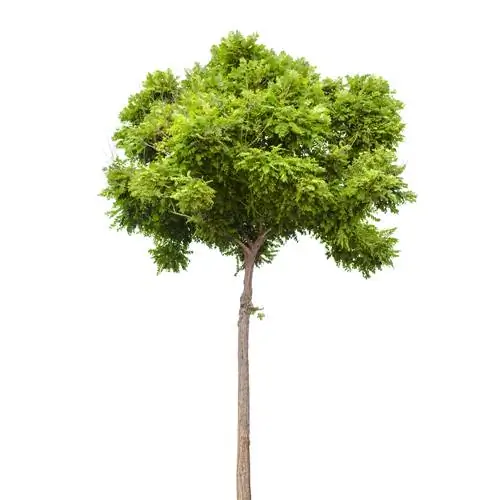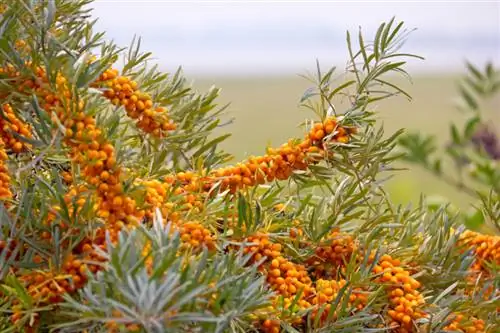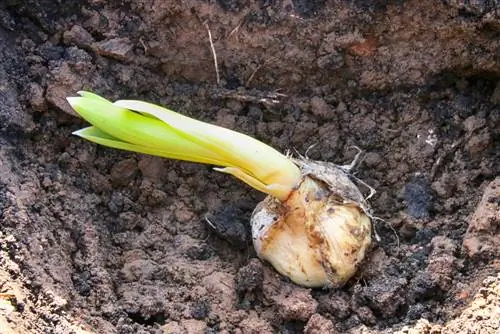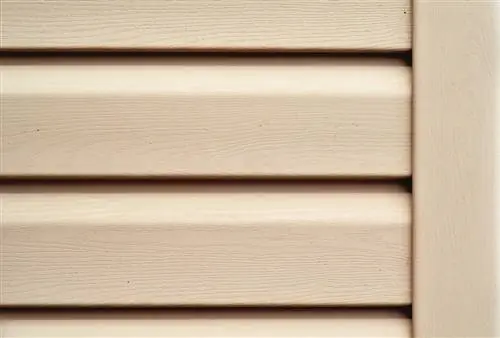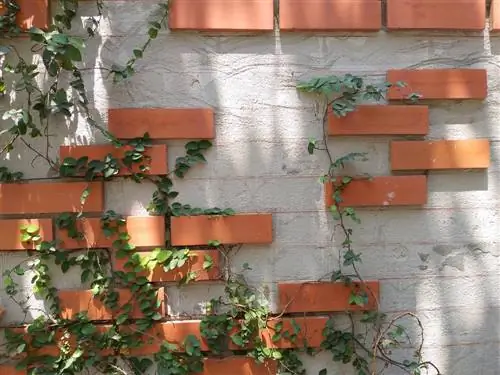- Author admin [email protected].
- Public 2023-12-16 16:46.
- Last modified 2025-01-23 11:21.
The black locust or mock acacia adorns many gardens in the form of a tree. The ball locust is much more impressive. This is a cultivated form of the deciduous tree, which, as the name suggests, has a spherical growth. Their growth height remains significantly below that of the actual robinia. This makes it ideal for small gardens. But that's not all, the ball locust has many other advantages. Find out more below.
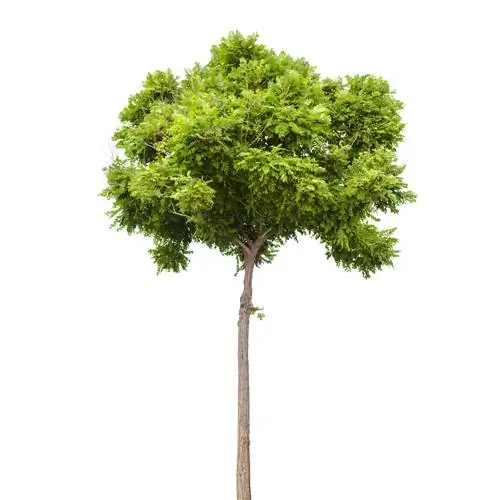
What is special about a ball locust tree?
The ball robinia is a refined form of robinia with slow growth, low height (max. 4-5 m), spherical crown and blue-green leaves. It is hardy, easy to care for and attracts insects, but is poisonous and susceptible to certain diseases.
Characteristics of the ball locust tree
- refined form of robinia
- slow growth
- low growth height (maximum 4-5 m)
- round, spherical crown
- feather-like, oval leaves
- does not form flowers
- forms dense shoots
- blue-green leaves
- Underside of leaf slightly lighter
- yellow, red or brown autumn colors
- Pulses on the branches
- Seeds are 4-10 cm tall
Caring for the ball locust tree
Location
Plant your locust locust on nutrient-rich clay, sand or gravel soil. Calcareous and impermeable soils, however, are unsuitable. Also make sure it is in a location protected from the wind so that the sensitive branches do not break. The dwarf tree will thank you for a place with intense sunlight with good growth.
pruning
You generally don't have to cut back a ball locust tree. It is naturally slow growing. Of course, it is possible to thin out the crown, as the deciduous tree tolerates radical pruning well. After severe storm damage, you should make sure to cut off any broken branches at the grafting points. Otherwise the spherical shape will be lost in the future.
Propagate ball robinia
Propagate the locust locust by grafting, a rather complicated process that is usually reserved for professionals and nurseries.
Diseases
Phloespora leaf spot disease is a fungus that specifically targets the locust locust. You can recognize the infestation by small brown spots on the leaves. In this case, cut off all affected branches. Sometimes a radical cut is necessary.
Advantages and disadvantages of the ball locust tree
Advantages
- beautiful scent
- hardy
- small stature
- attracts insects
- easy care

